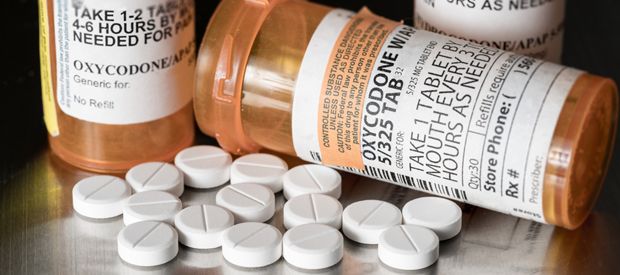Article
Opioid prescription ‘delayed dispensing’ happening across U.S.
Author(s):
Patients may use drugs for reasons or time frame other than intended by prescriber, according to study.

“Delayed dispensing” of opioid prescriptions could be an indicator that the drugs were misused, according to a new study.
Researchers examined the amount of time between surgeons and dentists writing opioid prescriptions and when patients had them filled in 2019. They found 1% of prescriptions were filled more than 30 days after writing, a potential cause for concern, according to the study.
Although the percentage is low, the actual number was 194,452 prescriptions with delayed dispensing, and it would translate to more than 260,000 opioid prescriptions per year if generalized to all surgical and opioid prescriptions in the country, according to a news release.
“Our findings suggest that some patients use opioids from surgeons and dentists for a reason or during a time frame other than intended by the prescriber,” lead author Kao-Ping Chua, MD, PhD, of the University of Michigan Institute for Healthcare Policy and Innovation, said in a news release. “These are both forms of prescription opioid misuse, which in turn is a strong risk factor for opioid overdose.”
The study, “Estimation of the Prevalence of Delayed Dispensing Among Opioid Prescriptions From U.S. Surgeons and Dentists,” was published in the journal JAMA Network Open.
Researchers examined the number of opioid prescriptions across the country for 2019 and state laws with time limits for dispensing the various types of controlled substances.
In 2019, 18 states allowed prescriptions for Schedule II opioids and other controlled substances – those with the highest risk of being diverted for misuse – to be filled up to six months after writing. Another seven states – Alaska, Colorado, Florida, Indiana, Montana, Ohio, Tennessee, and the District of Columbia – allowed the drugs to be dispensed up to 1 year after the prescription. Four states – Alabama, Connecticut, Idaho, and South Dakota – placed no time limit for dispensing Schedule II opioid prescriptions.
“It’s perplexing that states would allow controlled substance prescriptions to be filled so long after they are written,” Chua said in the news release. By comparison, delayed dispensing “dropped rapidly” in Minnesota in July 2019 when that state prohibited dispensing more than 30 days after writing.
Chua and the co-authors noted state and federal laws regulating the expiration periods for controlled substance prescriptions may be partly to blame. Tightening state laws could be a way to prevent or reduce delayed dispensing, but that also might inadvertently harm patients who take the drugs for chronic pain.
The suggested other options for controlling delayed dispensing:
- Laws could limit the dispensing time window only when opioids are written for acute pain.
- Hospitals could alter electronic health records to default signatures for prescriptions instructs pharmacists to refrain from dispensing more than 30 days after writing.
- Prescribing clinicians could manually add those instructions in their signatures.
- Insurers could refuse to cover prescriptions written by surgeons or dentists if they are tendered more than 30 days after writing.
It was unclear what would be the long-term effects of Minnesota’s legal time limit. That law was repealed March 29, 2020, at the beginning of the COVID-19 pandemic.
The study used data from the national pharmacy database and examined more than 20.85 million prescriptions. Among those, more than 16.28 million, or 78.1%, were dispensed on the writing date; more than 2.92 million were dispensed within one to three days afterward; and more than 1.15 million were dispensed in four to 14 days after writing, the study said.
Among clinicians, the proportion of prescriptions with delayed dispensing generally was higher for family medicine clinicians (7.1%), nurse practitioners (6.3%), internal medicine specialists (5.6%), and physician assistants (5.5%), than for surgeons (1%) and dentists (.9%), the study said.





